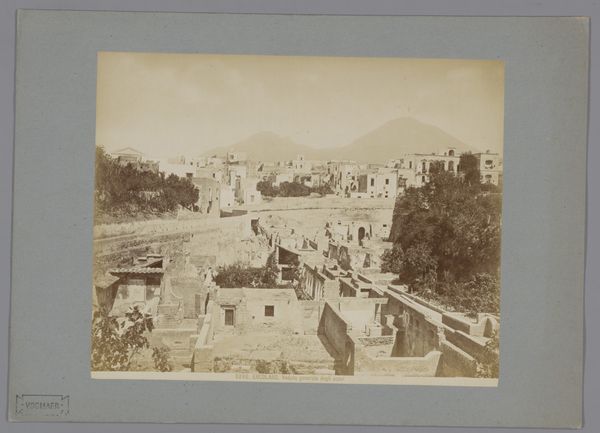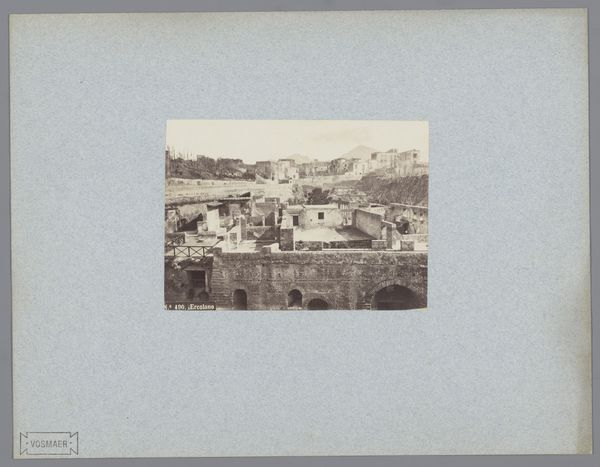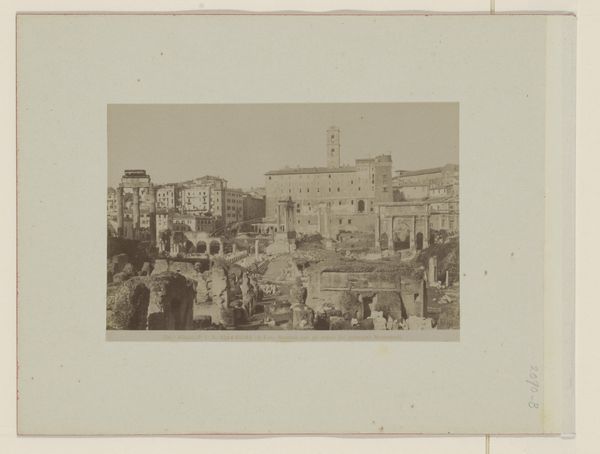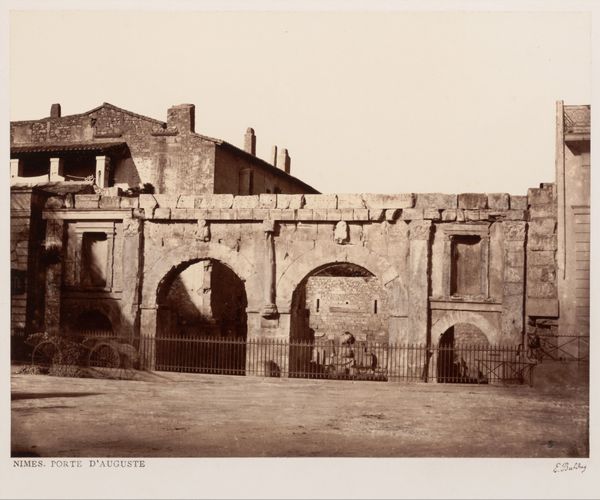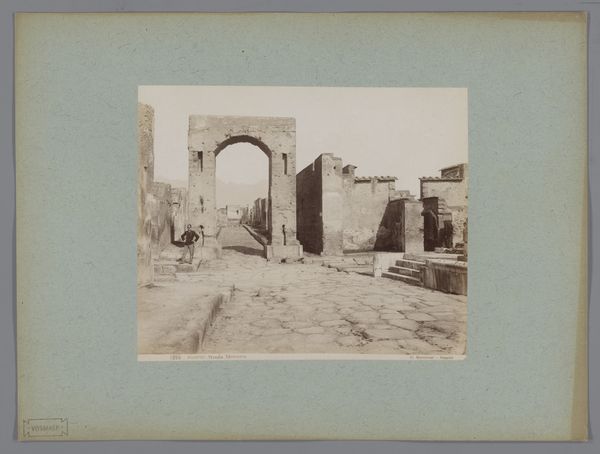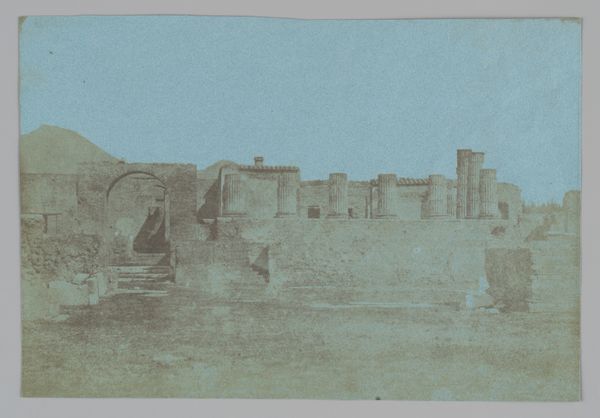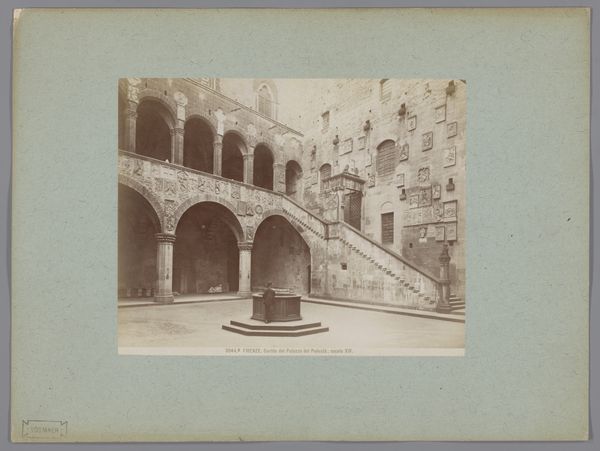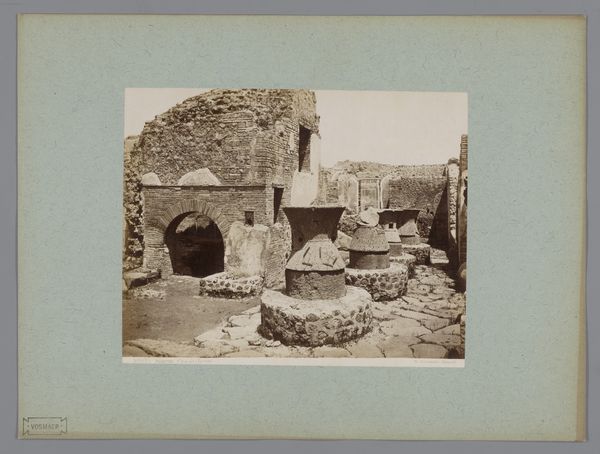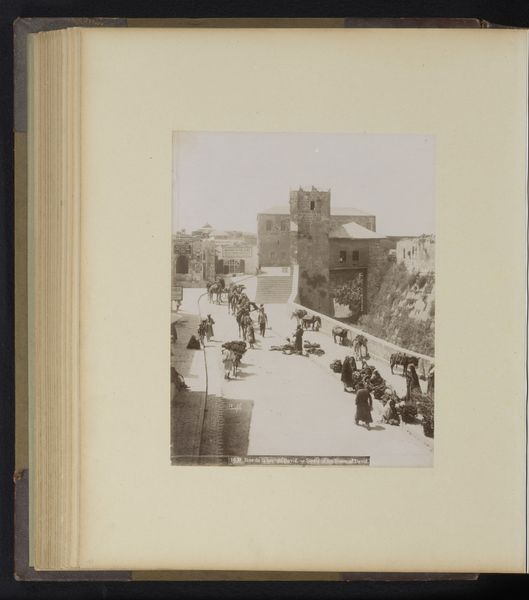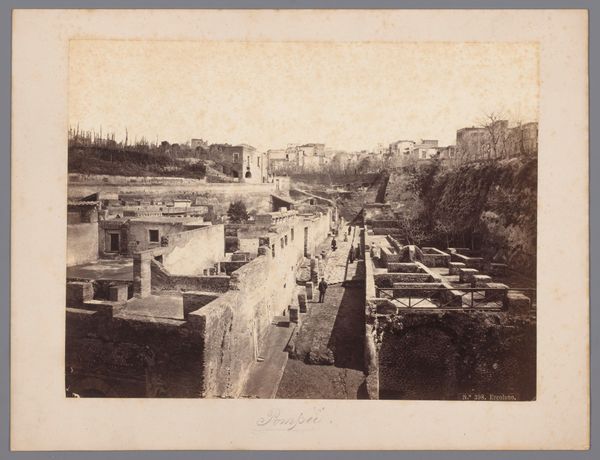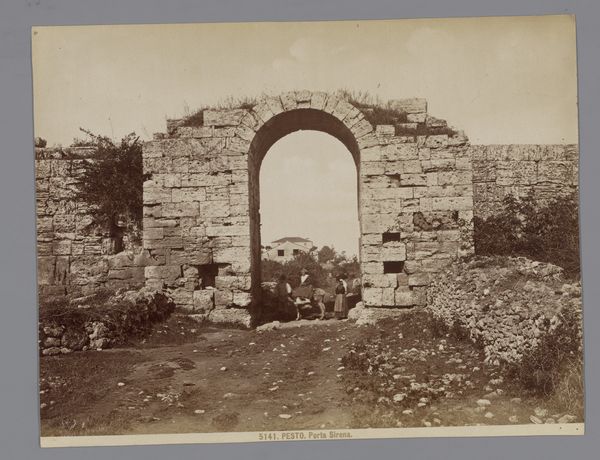
photography, gelatin-silver-print
#
landscape
#
photography
#
photojournalism
#
ancient-mediterranean
#
gelatin-silver-print
#
cityscape
Dimensions: height 315 mm, width 421 mm
Copyright: Rijks Museum: Open Domain
Editor: So this gelatin silver print, "View of Ruins in Herculaneum, Italy," by Giorgio Sommer, made between 1857 and 1875, it's really striking. I’m immediately drawn to the stillness, almost like a frozen moment in history. How do you interpret this work? Curator: It’s a powerful piece, isn’t it? Beyond the aesthetic, it invites us to consider the ethics of looking. Sommer was part of a wave of photographers documenting archaeological sites in the 19th century, fueled by European fascination with classical antiquity. But what stories are being told, and whose perspectives are centered? Think about how this photographic gaze relates to colonial power structures and the act of possessing the past through image. Editor: That's a really interesting angle. I was mainly thinking about the documentation aspect, how photography was used to preserve and share these findings. But the power dynamic hadn’t occurred to me. Curator: Exactly! Who is invited to look, who is erased? What narratives does this image reinforce or challenge about progress, civilization, and cultural heritage? Consider also how the very act of turning ancient ruins into a tourist attraction can transform them, commodifying history and creating particular, often biased, interpretations. Editor: So, looking at it as photojournalism, as the metadata suggests, feels a bit too straightforward? It’s more about what it implies within its historical context. Curator: Precisely. Consider its legacy—how such images influenced the cultural imagination. This is a visual record, but also a statement about European dominance, wouldn’t you agree? Editor: Yes, absolutely. I didn't initially see that, but it completely changes my understanding. I guess photography is never truly objective. Curator: Indeed. Reflecting on these power dynamics helps us engage more critically with historical images and their ongoing impact. It certainly gave me something to consider.
Comments
No comments
Be the first to comment and join the conversation on the ultimate creative platform.
